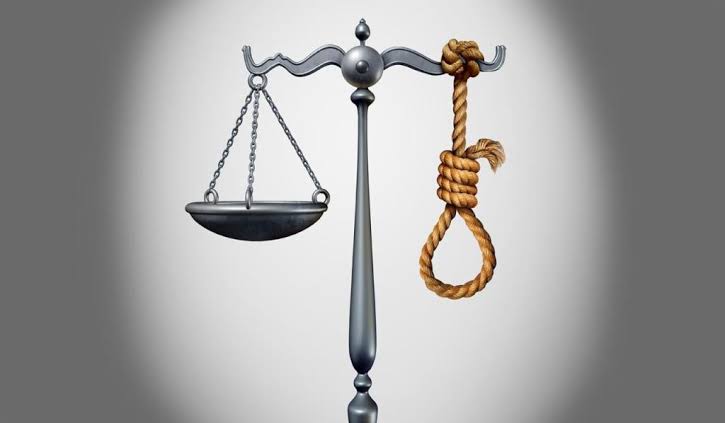TOPIC- JUSTICE & RETRIBUTION: EXAMINING CAPITAL PUNISHMENT IN INDIA
“Capital punishment is not about whether people deserve to die for the crime they committed. But the real question of capital punishment in this country, do we deserve to kill?”
The term “Capital Punishment” stands for most severe form of punishment. It is the punishment which is to be awarded for the most heinous, grievous and detestable crimes against humanity. While the definition and extent of such crimes vary from country to country, state to state, age to age, the implication of capital punishment has always been the death sentence. By common usage in jurisprudence, criminology and penology, capital sentence means a sentence of death.
India employs a variety of punitive measures aimed at reducing crime rates. These include life imprisonment, incarceration, fines, and, in exceptional instances, capital punishment—regarded as an exceptionally severe form of penalty.
HISTORY:
Capital punishment is an ancient sanction. There is practically no country in the world where the death penalty has never existed.
During the Mauryan Dynasty, those who violated the dynasty’s laws faced a range of punishments, each tailored to the nature of the transgression. The guiding principle behind the Mauryan approach was a system of “an eye for an eye, a hand for a hand,” ensuring retribution that mirrored the wrongdoing. Delving into the annals of history, it’s evident that King Hammurabi of Babylon was the pioneer in codifying criminal laws that encompassed the concept of the death penalty or capital punishment.
In the British colonial era, India witnessed the imposition of the death penalty, often carried out through hanging, following due process or, regrettably, even without it. However, post-independence, India embarked on a new chapter in its judicial system. After 1947, when India attained republic status and liberation from British colonial rule, a transformation in the system of administering death penalties ensued. The United Nations has unequivocally declared capital punishment, or the death penalty, as a violation of fundamental human rights.
CAPITAL PUNISHMENT IN INDIA:
- A careful scrutiny of the debates in British India’s Legislative Assembly reveals that no issue was raised about capital punishment in the Assembly until 1931, when one of the Members from Bihar, Shri Gaya Prasad Singh sought to introduce a Bill to abolish the punishment of death for the offences under the Indian Penal Code. However, the motion was negatived after the then Home Minister replied to the motion.
- In 1955, the Parliament repealed Section 367(5), CrPC 1898, significantly altering the position of the death sentence. The death penalty was no longer the norm, and courts did not need special reasons for why they were not imposing the death penalty in cases where it was a prescribed punishment.
INTERNATIONAL SCENARIO:
The international landscape regarding the death penalty – both in terms of international law and state practice – has evolved in the past decades. Internationally, countries are classified on their death penalty status, based on the following categories:
∙ Abolitionist for all crimes
∙ Abolitionist for ordinary crimes
∙ Abolitionist de facto
∙ Retentionist

At the end of 2014, 98 countries were abolitionist for all crimes, 7 countries were abolitionist for ordinary crimes only, and 35 were abolitionist in practice, making 140 countries in the world abolitionist in law or practice. 58 countries are regarded as retentionist, who still have the death penalty on their statute book, and have used it in the recent past10 .
- Several resolutions of the UN General Assembly (UNGA) have called for a moratorium on the use of the death penalty. In 2007, the UNGA called on states to “progressively restrict the use of the death penalty, reduce the number of offences for which it may be imposed” and “establish a moratorium on executions with a view to abolishing the death penalty.” In 2008, the GA reaffirmed this resolution, which was reinforced in subsequent resolutions in 2010, 2012, and 2014. Many of these resolutions noted that, “a moratorium on the use of the death penalty contributes to respect for human dignity and to the e
Supreme Court on Validity of Capital Punishment in India:
- Article 21 of the Indian Constitution ensures the Fundamental Right to life and liberty for all persons. It adds no person shall be deprived of his life or personal liberty except according to procedure established by law. This has been legally construed to mean if there is a procedure, which is fair and valid, then the state by framing a law can deprive a person of his life. While the central government has consistently maintained it would keep the death penalty in the statute books to act as a deterrent, and for those who are a threat to society, the Supreme Court too has upheld the constitutional validity of capital punishment in “rarest of rare” cases.
- In Jagmohan Singh vs State of Uttar Pradesh (1973), then in Rajendra Prasad vs State of Uttar Pradesh (1979), and finally in Bachan Singh vs State of Punjab (1980), the Supreme Court affirmed the constitutional validity of the death penalty. It said that if capital punishment is provided in the law and the procedure is a fair, just and reasonable one, the death sentence can be awarded to a convict. This will, however, only be in the “rarest of rare” cases, and the courts should render “special reasons” while sending a person to the gallows19 .
- The Law Commission of India in its 262nd Report (August 2015) recommended that death penalty be abolished for all crimes other than terrorism related offences and waging war.
CONCLUSION:
- The death penalty remains a contentious issue in India, with diverse viewpoints and compelling arguments on both sides. While proponents argue that it serves as a deterrent and a form of retribution for heinous crimes, opponents emphasize the risk of executing innocent individuals and the moral concerns associated with taking a human life. The country’s approach to the death penalty has evolved over the years, with a growing trend toward restricting its use to the “rarest of rare” cases. The recent legislative developments and judicial pronouncements reflect a more cautious and selective approach to capital punishment.
- India’s journey with the death penalty is a complex one, marked by legal and ethical dilemmas. As the nation moves forward, it is essential to continue this dialogue and engage in a thoughtful exploration of the issues surrounding the death penalty. The focus should remain on ensuring that the justice system upholds the highest standards of fairness, transparency, and accuracy, so that the ultimate punishment is imposed with extreme care and in the rarest of circumstances. The future of the death penalty in India will undoubtedly be shaped by evolving societal values, legal reforms, and international human rights standards, as the country strives to strike a delicate balance between justice, mercy, and human rights.
Author – Suhavi kaur, a Student of University Institute Of Legal Studies (UILS)



